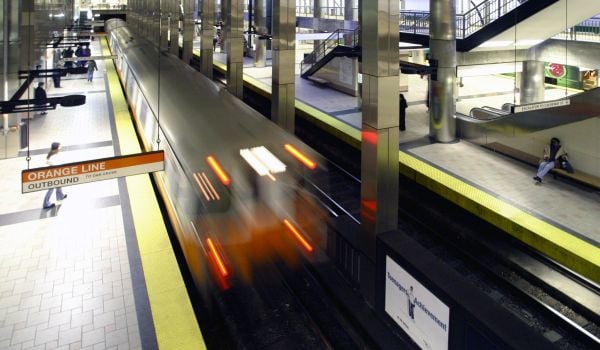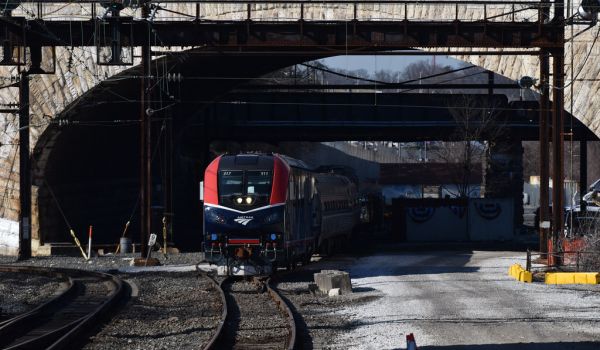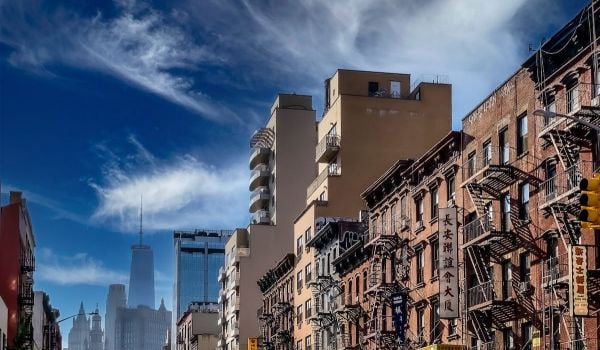January 2020: Arunava Kodali, a 40-year-old software engineer at a well-regarded firm in Kolkata’s IT business hub, Sector V, Salt Lake, walks into a swanky metro railway station in Kolkata’s sister city, Howrah, known for its small industrial units. He boards an air-conditioned elevated metro train at the terminal and dozes off. Less than an hour later, waking up to find he has reached his office, he alights from the train and strolls leisurely toward the shiny Sector V building that houses his workplace.
January 2014: Arunava Kodali, 34, pulls his car out of the garage and braces himself for another white-knuckle commute down a narrow road in Howrah, which will lead him to an ill-maintained – and in parts cratered – expressway, and across a gigantic cable-stayed bridge over the River Ganga (known as the Hooghly in these parts) after paying a toll and waiting in a long queue of vehicles to battle it out in rush-hour traffic. When he arrives at work, finding a place to park will cost him precious minutes and at least as much money.
“I’m wondering, when will we see that day when I board a metro rail from Howrah and reach my office in Salt Lake in half an hour?” says Kodali.
Even by optimistic official estimates, Kodali’s dream commute won’t become reality for at least six years. But if all the benchmarks are ultimately met, as happened in the building of a first-phase route of the East-West Metro Rail project in Kolkata this month, a train will connect Kolkata’s sister city Howrah with its satellite city Salt Lake.
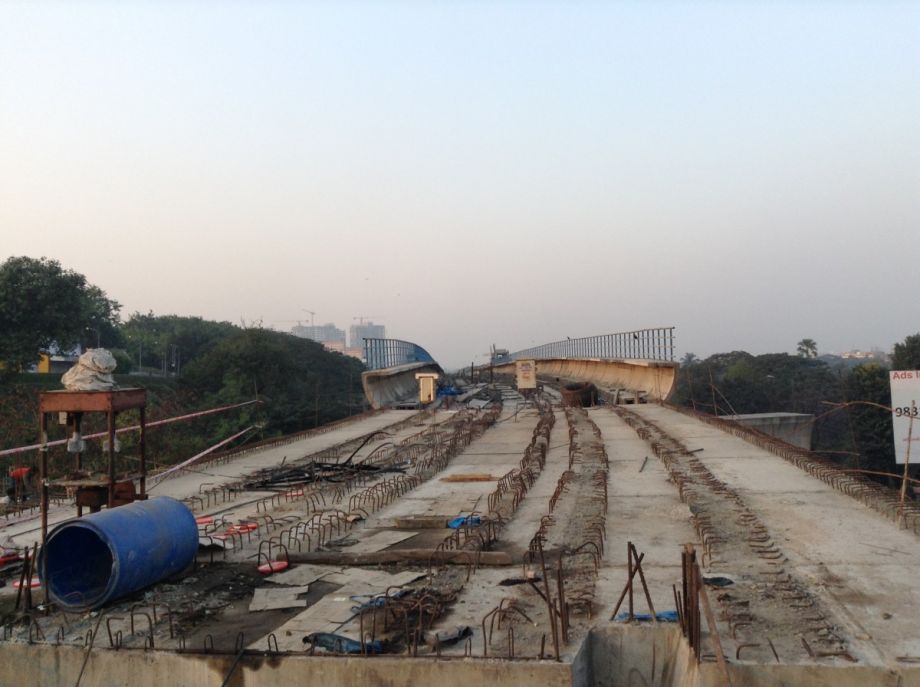
The elevated track, still under construction.
Kolkata was the first metropolis in India to boast a metro rail service when the system first opened in October 1984 as a small three-kilometer stretch that was then gradually expanded. With no metro service in any other Indian city for nearly the next two decades, the rail line was a quite a tourist attraction and much loved by its daily riders. Since then, the route has been extended to connect the extreme ends of the city from north to south. The construction of the East-West Metro Rail, on the other hand, has been routinely derailed, metaphorically speaking, almost since its inception.
Running through the heart of Kolkata, the corridor aims to bridge two of the city’s most populous areas and drastically cut down on travel times and costs for commuters. At a length of 14.67 kilometers (including a 5.77 kilometer viaduct and 8.9 kilometer tunnel) it is being constructed jointly by the Indian Railways and the federal urban development ministry through a purpose-built authority: the Kolkata Metro Rail Corporation Limited (KMRCL).
“Normally, one would take at least an hour and a half, and multiple modes of transport, to travel between the extremities of the city at peak hours on a weekday,” says the KMRCL’s literature on the project. “With the commissioning of the East-West Corridor, commuters would find themselves reaching their destinations in air-conditioned comfort in a fraction of the time they take today and with unbelievable reliability.”
Unbelievable being the key word. The project has been held hostage for many years now by funding crunches, political inaction, and eviction and relocation problems. But last month saw a small ray of hope for the rail line when a major hurdle was finally overcome. Fifty-eight families in the Duttabad area, who had held out for four years, finally agreed to relocation, signaling the resumption of work on a 365-meter stretch. “East-West Metro Gets Back on Track” read the headline in the city’s largest daily, The Telegraph.
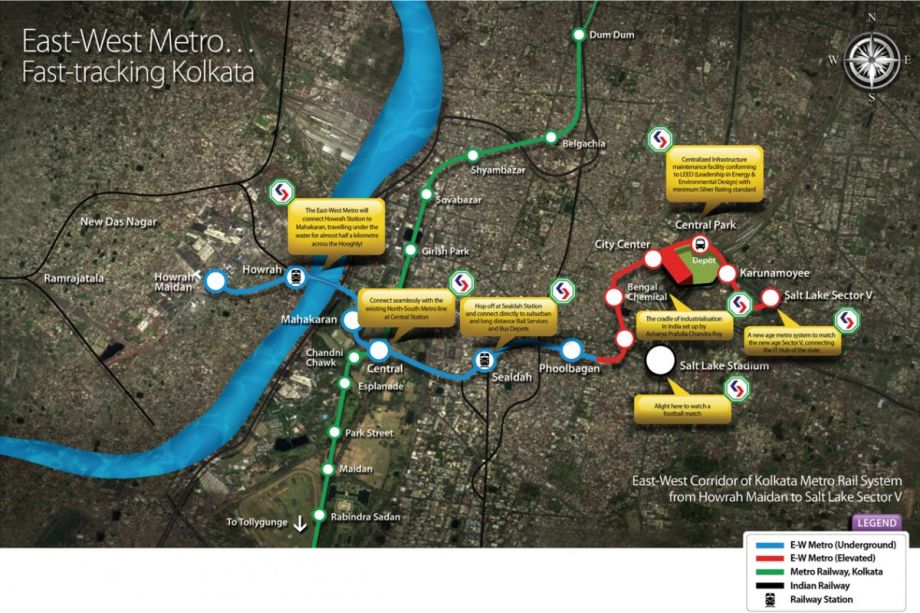
A map showing the route of the line (in red and blue) once it’s complete. Courtesy KMRCL
KMRCL Managing Director H K Sharma sounded optimistic when he spoke to Next City. “We can see the light now. But there are many hurdles still, and the alignment problem for the second phase is a big worry” — the second phase being the one in which the railway would run through Kolkata’s main business hub, an area of densely packed buildings, some of them historic.
Another challenge, this one more a feat of engineering than politics, is the section of track that will be laid below the surface of the Hooghly for almost half a kilometer – the first time a train in India has ever passed beneath a body of water.
“We have to pass that river and connect with the city. But the problem is that the land is not yet handed over [in a vital downtown stretch]. Some alignment studies are going on, on the PAP (Project-Affected People). Once we get that land it will still be four years to complete that stretch since it is not something that you can expedite just like that,” says Sharma.
Previously, the project had also been held up by political tensions between the sparring parties ruling the West Bengal state and the federal government in New Delhi. But Sharma says that hurdle has also been overcome. “We have no political problem now,” he says. “West Bengal Urban Development Minister Firhad Hakim is helping us a lot.”
Indeed, Minister Hakim says they have urged the East-West Metro authorities to sit with the government for a high-level meeting and complete a joint inspection of the sites to resolve the land issues.
“We are awaiting a response from the KMRCL for rather long,” says Hakim. “They should hold a joint inspection and we will try to remove all hurdles like we did for the Duttabad section.”
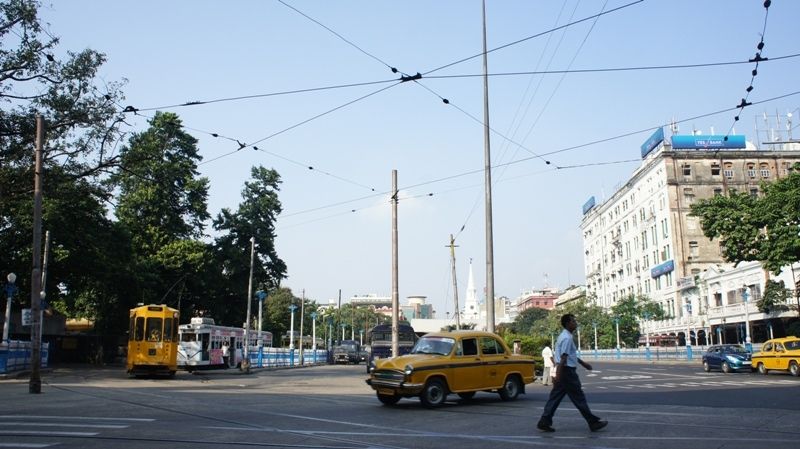
The elevated rail line will run through downtown Kolkata, permanently altering the area’s character.
According to Sharma, once completed, the project will represent a feat of Indian engineering. “The uniqueness of the East-West Metro is that it will go underwater for the first time in India. It will also connect two of the most populated and congested railway stations in India – or rather the world – Howrah and Sealdah,” he says.
“The reinforced concrete segmental tunnel linings [under the Hooghly River] have a thickness of more than a quarter of a meter and are caulked with a composite gasket of neoprene and hydrophilic rubber to seal the tunnel from ingress of water. This marvel of modern technology is a resounding first in India as well as a rare venture worldwide,” trumpets the KMRCL literature.
But the end is not yet in sight. Sharma admits the project is still plagued by funding problems. The Japan International Cooperation Agency (JICA) is a lender for the project and, according to a media report in November, it was unhappy with the confusion over stakeholding in the project between the Indian Railway and the Urban Development Ministry of India. And while KMRCL boasts of the East-West Metro as an engineering marvel, not all urban planners are as impressed by the project’s design.
“Taking the train over ground through an elevated corridor is surely less expensive, but it will affect the image of the city,” says Piyush Rout, an urban planner based in the eastern city of Bhubaneswar. “I wish it was all underground, without altering the façade of Kolkata, especially in the downtown Dalhousie-Esplanade area of heritage buildings and open spaces.”
Rout is also skeptical that the new rail line alone will solve the problem of commuting from east to west. “The metro alone cannot solve the problems of the city or upgrade mobility,” he says. “We have to have a good road system, good buses, maybe a BRT and a cycle corridor… All have questions about the image of Kolkata being changed by this elevated rail corridor.”
Photos by Sujoy Dhar


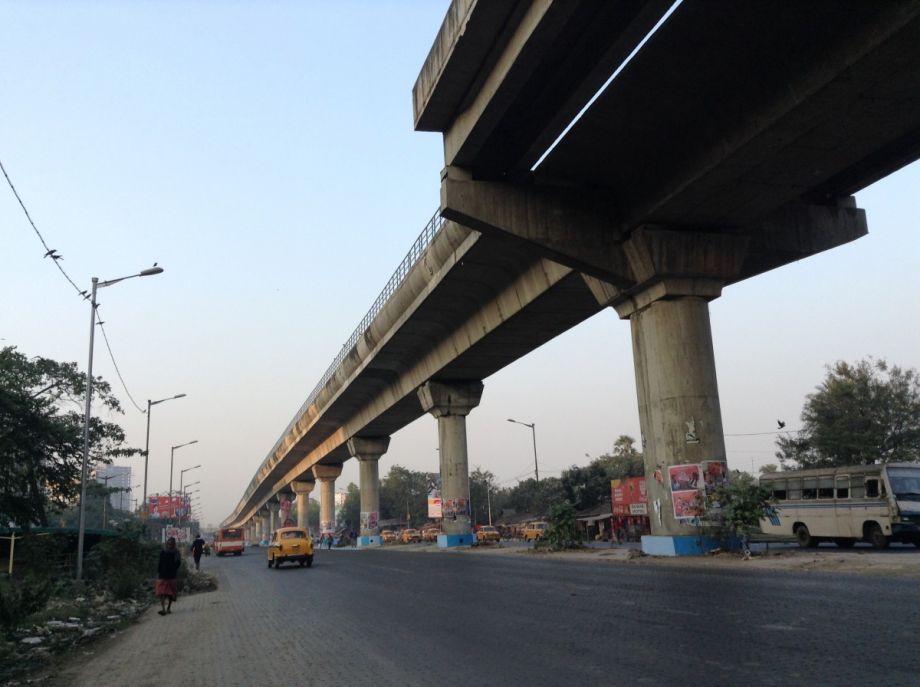

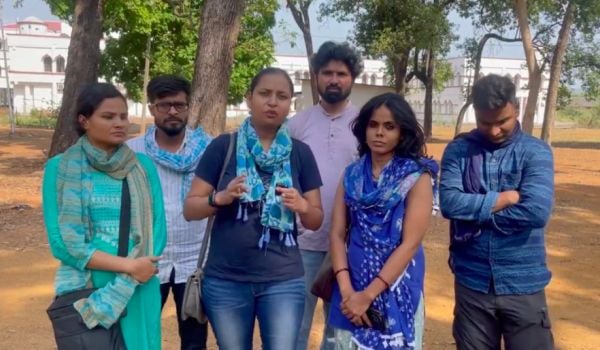
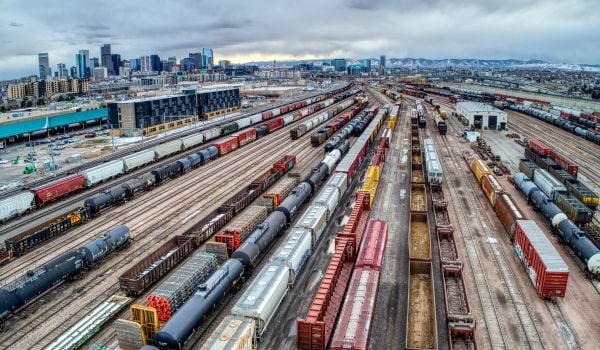

_1200_700_s_c1_600_350_80_s_c1.jpg)
